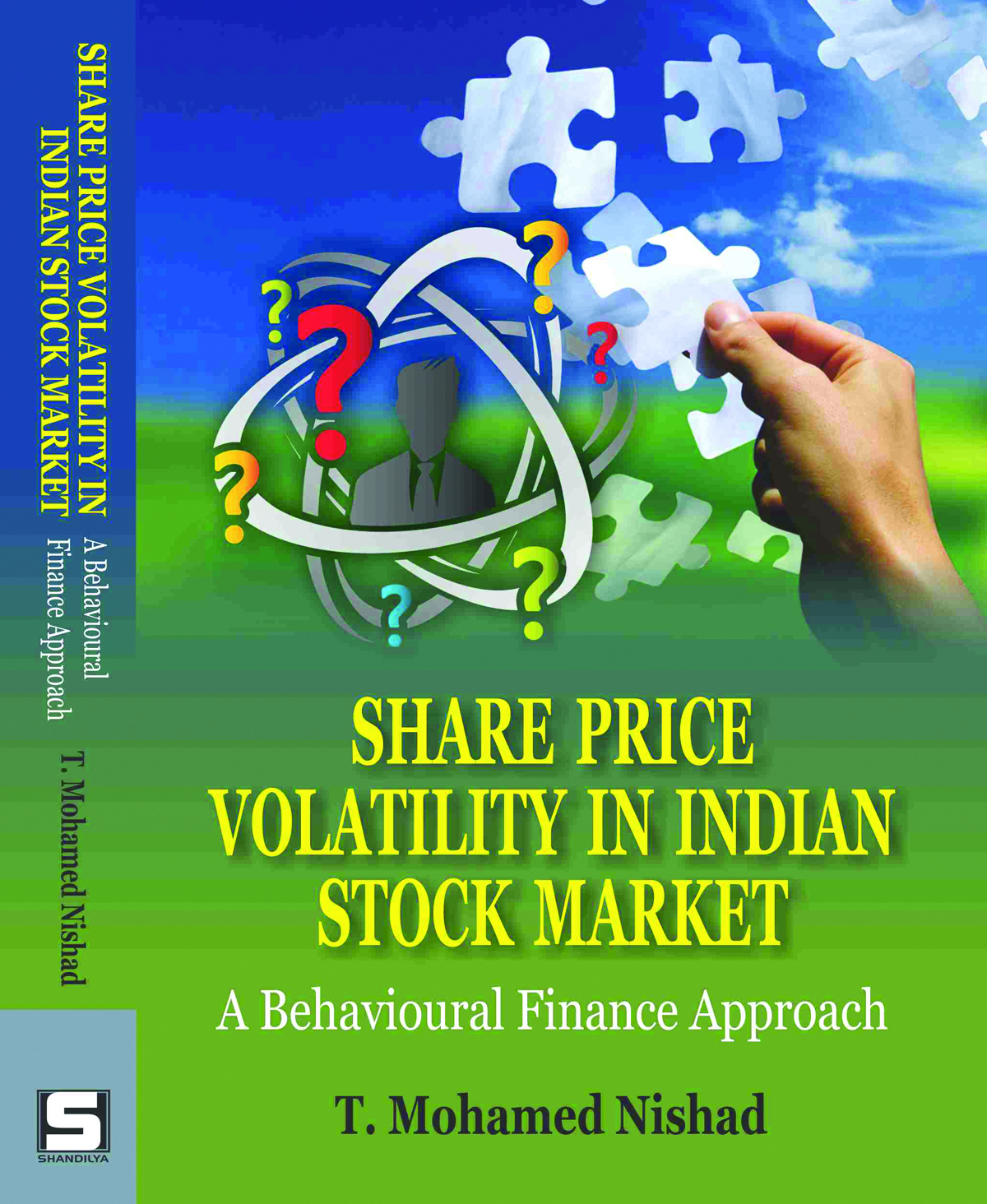Categories of the Books
- Sociology
- 2024
- Women Studies
- 2023
- 2022
- 2021
- 2020
- 2019
- 2018
- 2017
- Dr. Debesh Bhowmik
- Agriculture
- Banking
- Covid-19
- Dalits
- Economics
- Education
- Education & Gender
- Environment
- Finance
- Hindi
- History
- Human Rights
- Gandhian Studies
- GST
- Geography
- Insurance
- Law
- Literature
- Migration
- Military Studies
- Military Law
- Mass Media
- Commerce
- Management
- New Books
- NREGA
- Public Administration
- Politics
- Share Market
- Social Work
- Tourism
- Tribes
- Women & Children Studies
- Forthcoming
- Uncategorized
Book & Detail
Share Price Volatility in Indian Stock Market
-

Author : T. Mohamed Nishad Year of Publication : 2019 ISBN : 9789388147163 Language : English Binding : Hard Bound Pages : 320 Size : 23 cms Categories : 2019, Commerce, Management, Share Market Price : 1400
FREE HOME DELIVERY
About the Book :
Volatility is a statistical measure of risk, i.e., ups and downs of an asset price fluctuations over time. If an asset has sudden high price movement, the security has high volatility. If the security’s price is relatively stable, the security has low volatility. Volatility of the share price hampers individual investment, it creates more uncertainty in the market and adversely affects the flow of fund to productive investment. The reasons for volatility may be corporate, industry, market or investor specific. In some studies micro-variables like dividend per share, earnings per share, company size and book value per share have got prominence and in others macro- variables like bank rate of interest, index of industrial growth, union budget, inflation rate and foreign currency value, rainfall, etc., has been highlighted. If these are the only reason for the change in share price, the share price doesn’t change by minute by minute and even second by second as they do in the stock market. In practice, the behaviour of the investor affects largely the share price movements which can be explained in behavioural finance.The book has been presented in nine chapters. The first chapter deals with introduction, significance, research problem, the scope of the study, objectives, hypotheses, methodological design, conceptual model, and chapterisation of the study. The second chapter is Review of Literature. The third chapter provides the theoretical overview of the variables. Chapter four discusses the extent and pattern of volatility in Indian stock market. The fifth chapter is the analysis of market efficiency of Indian Stock Market. Chapters six, seven and eight are devoted to security analysis, behavioural biases and emotional intelligence and investment performance respectively. The ninth and last chapter presents the conclusion.
Volatility is a statistical measure of risk, i.e., ups and downs of an asset price fluctuations over time. If an asset has sudden high price movement, the security has high volatility. If the security’s price is relatively stable, the security has low volatility. Volatility of the share price hampers individual investment, it creates more uncertainty in the market and adversely affects the flow of fund to productive investment. The reasons for volatility may be corporate, industry, market or investor specific. In some studies micro-variables like dividend per share, earnings per share, company size and book value per share have got prominence and in others macro- variables like bank rate of interest, index of industrial growth, union budget, inflation rate and foreign currency value, rainfall, etc., has been highlighted. If these are the only reason for the change in share price, the share price doesn’t change by minute by minute and even second by second as they do in the stock market. In practice, the behaviour of the investor affects largely the share price movements which can be explained in behavioural finance.
The book has been presented in nine chapters. The first chapter deals with introduction, significance, research problem, the scope of the study, objectives, hypotheses, methodological design, conceptual model, and chapterisation of the study. The second chapter is Review of Literature. The third chapter provides the theoretical overview of the variables. Chapter four discusses the extent and pattern of volatility in Indian stock market. The fifth chapter is the analysis of market efficiency of Indian Stock Market. Chapters six, seven and eight are devoted to security analysis, behavioural biases and emotional intelligence and investment performance respectively. The ninth and last chapter presents the conclusion.
About the Author
Dr. T. Mohamed Nishad, M.Com., P.G. Diploma in Counselling, Ph.D., is an Assistant Professor, Research and P.G. Department of Commerce and Management Studies, Farook College (Autonomous), Kozhikode (Kerala). He has about seven years of international industry experience and fourteen years of teaching experience at UG and PG levels. He obtained his doctorate degree in behavioural finance. His areas of interest are finance and data analysis. He worked in Kenya, Tanzania, Indonesia and United Arab Emirates and visited Singapore. He has guided hundreds of participants of various programmes in carrying out studies involving the use of statistical techniques.

